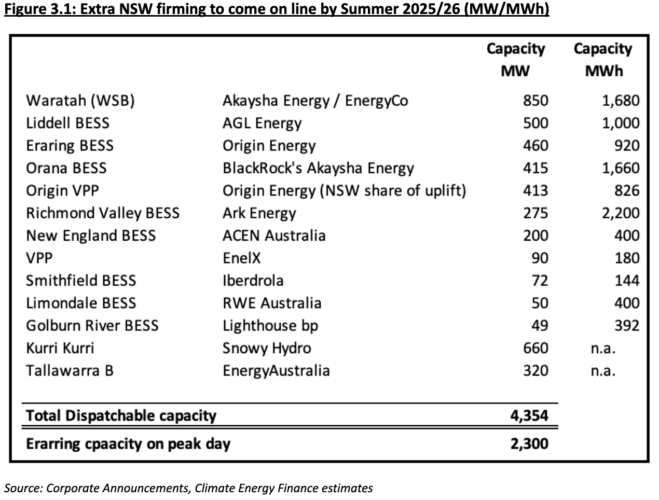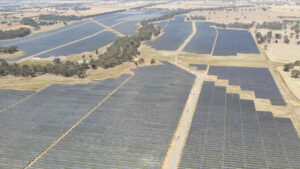A delay in the closure of the massive Eraring coal fired power station in NSW could cost up to $150 million a year in taxpayer funds, and would be “unconscionable” given the massive handouts and windfalls enjoyed by its owner Origin Energy, according to a new report.
The 2.88 gigawatt (GW) Eraring power plant – the biggest in the country – is slated for complete closure in August 2025, but the NSW government is worried the state will be at risk of blackouts or price hikes if it does actually close at that time.
The new analysis from Climate Energy Finance says there will be no reliability gap, and the costs of keeping the plant open will equate to more than six times what NSW has spent in the past four years electrifying and solarising social housing.
The extra annual cost estimated by CEF is for keeping all four 720 MW units of the coal power plant open, but CEF director Tim Buckley argues that with enough firmed renewables coming online by the summer of 2025/26, there is scope to allow the plant to close on the current timeline.
Buckley says the state could opt for a phased approach, shutting two units slightly earlier in March, 2025, and keeping the last two open until August, 2026 at the latest, which would be more fiscally acceptable.
That would allow funds to be directed towards speeding up the deployment of distributed energy resources such as rooftop solar and batteries, virtual power plants, and supporting commercial and industrial (C&I) renewables.
“It’s past time for the NSW government to stop making free bank for the private operator of a hyper-polluting, high-emissions, end-of-life coal clunker by gouging NSW consumers,” he says.
“We call on the NSW government to rule out extending Eraring and subsiding (Eraring owner) Origin Energy to keep it open, prioritise the public interest, and responsibly invest public money in accelerating the energy transition to the benefit of all energy consumers.”
Eraring has already cost taxpayers enough
Eraring has already been a costly beast for NSW taxpayers.
In addition to the $75 million the government effectively paid to Origin to take the power plant off its hands in 2013, taxpayers have been subsidising the price of coal it has using since December 2022.
CEF estimates that benefit for Origin to be around $468 million to date.
This subsidy, which was a response to the price spike in early 2022 caused by the Ukraine war, caps the price generators pay for coal at $125 a tonne, with the government funding any excess above that.
That subsidy is supposed to end on June 30 this year, with NSW Treasurer Daniel Mookhey firmly against extending the cap.
Furthermore, for taking on an effectively free asset from the government, Eraring has been something of a cash cow for Origin, delivering $382 million per annum in pre-tax cash in the years between 2019 and 2021, according to documents CEF sourced through Freedom of Information claims.
Buckley says the cumulative $1.1 billion in cash generated during a period of moderate power prices in NSW is likely to pale in significance against the years since when Origin benefited from the coal price cap as well as the huge and lasting jump in power prices.
The complicated problem facing Origin Energy and the NSW government is one of money.
Buckley estimates the capital cost of keeping all four Eraring units open to Origin is $200 million a year, a fee the company is unlikely to want to pay if the plant isn’t making enough money to cover those costs.
Furthermore, if it does announce an extension, wholesale energy prices in NSW are likely to dip leaving Eraring more out of pocket.
“I think they should do it as a gift for the people of NSW, given how much they’ve already taken from them. But what they won’t do is close it and lose money in the process,” Buckley says.
Renewables could solve this problem
NSW’s alternative is to lean into its rising renewables asset base.
It’s one that even the Australian Energy Market Operator (AEMO) suggests will be able to fill the 2.88 GW gap left by Eraring by the summer of 2025/26.
Some 4.354 GW of renewables and battery energy storage systems (BESS) are due to come online by the end of 2025.

AEMO says tenders for just over 2.5 gigawatts (GW) of battery energy storage system (BESS) firming capacity have been awarded in NSW to date, which it expects to be online by the end of 2025. Another 1.3 GW is in the works after being underwritten in December last year.
But that asks NSW energy minister Penny Sharpe to rely on most of these proposals getting through the still-congested state planning process – one that takes between three and 10 years – and being built on time.
The CEF report is optimistic, however, saying there is more than enough new firmed renewables capacity to replace Eraring’s 12 TWh pa of generation and replace the 7 TWh pa from Vales Point, due to shutdown in 2029.
And were NSW to more radically shift its perspective towards distributed energy resources (DER), it could further reduce any risks associated with Eraring’s shutdown.










